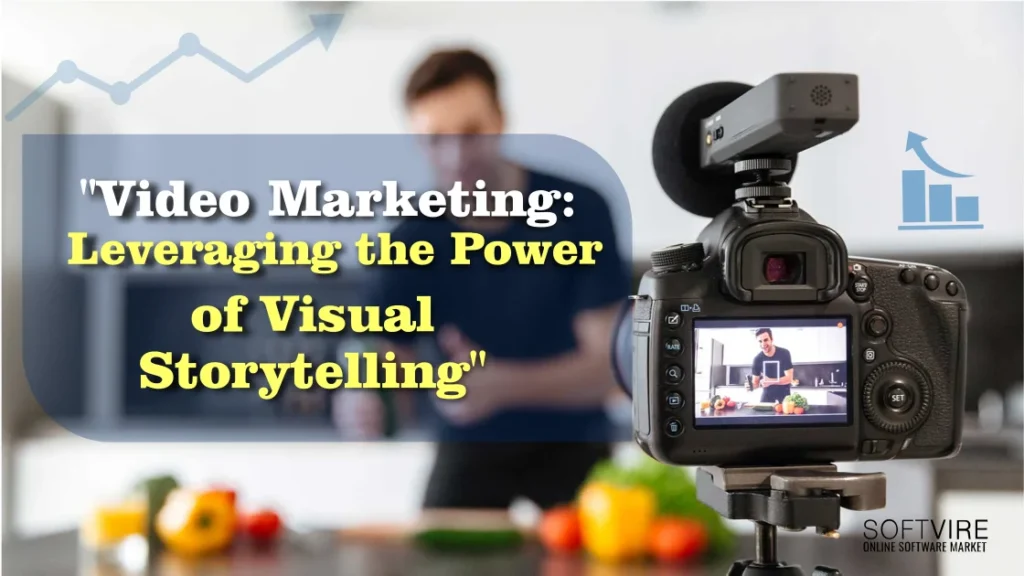I. Introduction
A. Definition of video marketing: This section provides a concise definition of video marketing, explaining that it involves using videos to promote products, services, or brands.
B. Importance of visual storytelling in video marketing: Here, the focus is on highlighting the significance of visual storytelling within video marketing. It explains how visual storytelling captivates and engages viewers, making the marketing message more memorable and impactful.
C. Purpose of the outline: This part clarifies the outline’s objective, which is to explore various strategies that leverage the power of visual storytelling in video marketing. It sets the stage for the subsequent sections.
II. Understanding Video Marketing
A. Definition and significance of video marketing: This section expands on the definition provided in the introduction, emphasizing the significance of video marketing as a powerful tool for reaching and engaging consumers.
B. Statistics and trends highlighting the effectiveness of video marketing: Here, the outline delves into relevant statistics and trends that showcase the effectiveness and growing popularity. These numbers help substantiate the importance of incorporating video into marketing strategies.
C. Various platforms and channels for video marketing: This part explores the different platforms and channels available for video marketing, including social media, websites, video hosting platforms, and email marketing.
III. The Power of Visual Storytelling
A. Definition of visual storytelling: This section provides a comprehensive definition, explaining how it combines visuals, narratives, and emotions to create a compelling and immersive experience.
B. Psychological impact of visual storytelling on viewers: Here, the focus is on the psychological aspects of visual storytelling. It explores how visuals and narratives can evoke emotions, foster empathy, and establish a deeper connection with the audience.
C. Benefits of visual storytelling in video marketing: This part outlines the specific advantages that visual storytelling brings to video marketing, such as increased engagement, improved brand recall, and enhanced message retention.
IV. Crafting an Engaging Video Story
A. Identifying the target audience: This section emphasizes the importance of understanding the target audience’s preferences, interests, and pain points. It explains how this knowledge informs the creation of a video that resonates with the intended viewers.
B. Determining the marketing goals: The outline highlights the significance of defining clear marketing goals that align with the overall business objectives. It stresses the need to establish measurable goals to evaluate the success of the video marketing campaign.
C. Choosing an appropriate storytelling format: This part explores various storytelling formats, such as testimonials, narratives, demonstrations, or educational content. It explains how selecting the correct format enhances the effectiveness of the video.
D. Developing a compelling narrative arc: This section delves into the elements of a compelling narrative arc, including a captivating beginning, rising tension, climax, and resolution. It demonstrates how a well-structured story keeps viewers engaged and emotionally invested.
E. Incorporating emotions and relatable characters: Here, the outline emphasizes the role of emotions and relatable characters in video storytelling. It explains how these elements connect with the audience, evoking empathy and enhancing the overall impact.
F. Showcasing a clear call-to-action: This part stresses the importance of incorporating a clear and compelling call-to-action in the video. It explains how a well-defined call-to-action encourages viewers to take the desired action, such as purchasing, subscribing, or visiting a website.
V. Utilizing Visual Elements for Impact
A. Selecting the right visuals: images, animations, and graphics: This section explores selecting appropriate visuals that align with the brand image and the video’s narrative. It emphasizes the importance of using high-quality images, animations, and graphics to enhance the visual storytelling experience.
B. Importance of color, composition, and visual aesthetics: Here, the outline discusses the significance of color theory, composition techniques, and overall visual aesthetics in video marketing. It explains how these elements contribute to creating visually appealing and engaging videos.
C. Incorporating text and typography effectively: This part highlights the effective use of text and typography in video marketing. It covers aspects such as font selection, readability, and using text to complement and enhance the visual storytelling.
D. Using music and sound effects to enhance storytelling: Here, the outline explores the role of music and sound effects in video marketing. It explains how the correct audio elements can create an atmosphere, evokes emotions, and amplify the impact of visual storytelling.
E. Optimizing video length and pacing for engagement: This section addresses the optimal video length and pacing to keep viewers engaged. It provides insights into finding the right balance between brevity and delivering the intended message effectively.
VI. Implementing Video SEO Strategies
A. Importance of search engine optimization (SEO) for videos: This part emphasizes the significance of video SEO to ensure that videos are discoverable and rank well in search engine results. It explains how optimizing videos for search engines increases visibility and reach.
B. Conducting keyword research for video titles, descriptions, and tags: Here, the outline delves into conducting keyword research to identify relevant keywords and phrases for video titles, descriptions, and tags. It emphasizes the importance of aligning video content with popular search queries.
C. Optimizing video thumbnails and metadata: This section explores the optimization of video thumbnails and metadata. It explains how eye-catching thumbnails and well-crafted metadata improve click-through rates and overall visibility.
D. Promoting videos through social media and other channels: This part discusses the role of social media and other channels in promoting videos. It provides insights into leveraging social media platforms and other distribution channels to reach a wider audience and increase engagement.
VII. Measuring Video Marketing Success
A. Identifying relevant video metrics and key performance indicators (KPIs): This section highlights the importance of identifying and tracking relevant video metrics and KPIs. It provides examples of metrics such as views, engagement rate, conversion rate, and shares, which help assess the success of video marketing efforts.
B. Utilizing analytics tools to track video performance: Here, the outline explores various analytics tools and platforms that can be used to track video performance. It emphasizes the value of data in understanding viewer behavior and making informed decisions.
C. Interpreting data and making data-driven decisions: This part delves into interpreting video data and using insights to make data-driven decisions. It highlights the importance of analyzing data to optimize video marketing strategies.
D. Iterating and improving video marketing strategies based on insights: This section emphasizes the iterative nature of video marketing. It explains how insights gained from data analysis can be used to refine video marketing strategies and improve future campaigns.
VIII. Case Studies and Best Practices
A. Examining successful video marketing campaigns: This part analyzes successful video marketing campaigns from various industries. It explores these campaigns’ strategies, storytelling techniques, and visual elements to achieve notable success.
B. Learning from industry leaders and their visual storytelling techniques: The outline explores the techniques industry leaders use in their video marketing efforts. It provides insights into their creative approaches, narrative structures, and visual execution.
C. Identifying best practices for leveraging the power of visual storytelling: This section consolidates the lessons learned from case studies and industry leaders into actionable best practices. It offers practical advice and tips for leveraging visual storytelling effectively in video marketing.
Conclusion
In conclusion, businesses are encouraged to implement visual storytelling strategies in their video marketing endeavors. By leveraging visual storytelling’s potential impact and benefits, businesses can create compelling videos that resonate with their audience and achieve their marketing goals.
Are you looking for online learning tools and discounted Microsoft products? “Try Microsoft Office 365 today and boost your productivity! Check out our hot offers at Microsoft Softvire New Zealand.



